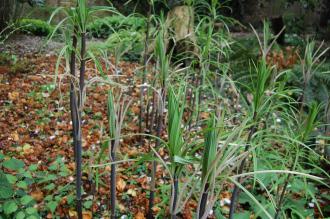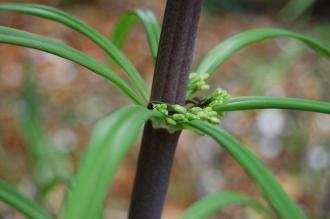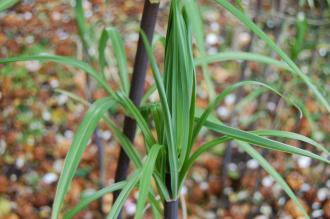
Polygonatum verticillatum (19/04/2014, Kew Gardens, London)
Position: Partial to full shade
Flowering period: Late spring to early summer
Soil: Moist, well drained
Eventual Height: 1.2m
Eventual Spread: 40cm
Hardiness: 5a, 5b, 6a, 6b, 7a, 7b, 8a, 8b, 9a
Family: Asparagaceae
Polygonatum verticillatum is a herbaceous perennial with an upright habit. Its dark green leaves are lanceolate, up to 20cm long, 3cm broad an appear in whorls. Its fragrant green/ white tubular flowers are pendulous and borne at the leaf axils. Its fruit are small spherical and red. Its roots are tuberous rhizomes, these aid its slow spread.

Polygonatum verticillatum Flower Buds (19/04/2014, Kew Gardens, London)
Polygonatum verticillatum, commonly known as Whorled Solomon’s Seal, is native to most of Europe (including the UK) and south west Asia. In its native habitat it grows at woodland edges and other shady places. Polygonatum verticillatum is synonymous with Convallaria verticillata.
The etymological root of the binomial name Polygonatum is derived from the Greek polys meaning ‘many’ and gonu meaning ‘a small joint’. Verticillatum is derived from the Latin verticitas meaning ‘vertical direction’.
The landscape architect may find Polygonatum verticillatum useful as an attractive native perennial with a vertical habit, suitable for shady locations

Polygonatum verticillatum Leaf (19/04/2014, Kew Gardens, London)
Polygonatum verticillatum prefers moist, fertile, humus rich, well-drained soils. It tolerates most pH of soil and will tolerate very acidic soils. It dislikes dry soils.
Ecologically, Polygonatum verticillatum flowers are attractive to pollinating insects.
Polygonatum verticillatum requires little maintenance. Large clumps may be divided in spring.

